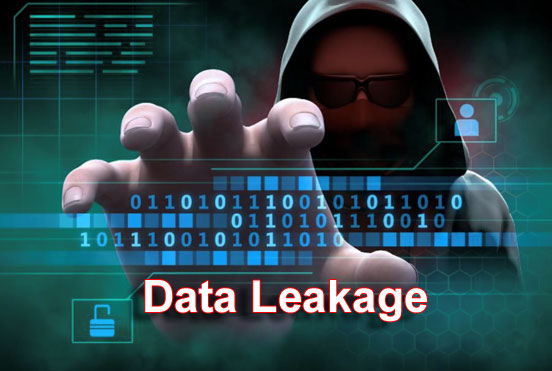Data leakage is a major problem that both businesses and individuals must be aware of. It can come in the form of unsecured messages, unsecure online accounts, lost laptops, or USBs with sensitive data. Data leakage can lead to not only the exposure of personal information but also intellectual property. However, there are many steps you can take to prevent data leakage through smart device use or an employee handbook.
What is Data Leakage?
Data leakage is the act of unlawfully transmitting or publishing sensitive or confidential information. Data leakage can come in many forms, ranging from emailing private company communications to someone not authorized to view them to exposing an entire database. Data leakage is often unintentional and comes with the territory of technology usage. Prevention starts with awareness.

Types of Data Leakage
Data leakage is the accidental or intentional release of private data to unauthorized personnel. It is often linked to attacks by hackers or disgruntled employees, who steal sensitive data for their own personal gain. Let’s know the types of data leakage:
Phishing
Phishing is a type of theft that occurs when someone tries to get personal information from the user by pretending to be a trustworthy person or organization. This can be done through email, text messages, or even phone calls.
Legacy Tools
There are many new tools on the market designed to protect data leakage. These include secure virtual desktops, encrypted email, and facilitating two-factor authentication for users logging in remotely.
Unfortunately, these modern tools are not without their drawbacks. For example, some may be too expensive to use, some are difficult to deploy for mobile workers, and others require substantial maintenance. Legacy tools are typically less expensive, easier to deploy on mobile devices, and require little maintenance.
Shadow IT
The prevalence of shadow IT has grown dramatically, with businesses reporting that their employees are adopting apps and software without authorization. This leads to data leakage through unsecured channels that third parties can intercept. As a result, business leaders should take steps to employ digital security measures to safeguard their company’s data.
Business leaders should take steps to protect their company’s data. It has become clear that shadow IT is an issue for businesses, as employees are adopting apps and software without authorization.
What causes data leakages?
Data leaks are one of the risky cyber security threats because it is difficult to find out who or what leaked the information. As data becomes more valuable, companies are seeking ways to protect their data from these leaks.
System errors
Data leakage is an unfortunate event that can cause huge consequences to businesses. If you want to avoid this scenario, it’s important to make sure your systems are not prone to errors.
Misconfigurations
Misconfigurations in organizations are common. From passwords to firewalls, there are many different things that can go wrong with systems and networks. It’s important to have a process in place so you can identify when something does go wrong. Unauthorized access to company data is often the result of misconfigurations.
How to Prevent Data Leakage
With a little effort and careful planning, you can prevent data leakage from happening to you!
Backups
The first step to preventing data leakage is to ensure that your backups are working. Make sure you have a quality cloud or external HDD/SSD backup plan in a secure place. You should have a good backup plan for every IT system you have. It’s important to back up all systems, including your network and servers.
Encrypt data
Encrypting data is one way to protect confidential information and avoid the security risks that come with storing them on an unsecured server or in an unencrypted format. Encryption is the process of converting data into an unintelligible form, making it unreadable by anyone other than the person who has the key to decrypt it.
Keep your files safe
As a user, you are responsible for keeping your files safe. If you keep your documents, photos, and other files in a folder on your computer, you are responsible for backing up the folder. If you keep your files in a cloud-based storage system, you are responsible for backing up that system. If you keep your files on a network drive, you are responsible for backing up that network drive.
Conclusion
Data leakage is one of the most serious problems that can happen in any organization. This article has shown you how to prevent data leakage on your computers. It is important to be prepared for this eventuality, so you are not scrambling when it happens.
